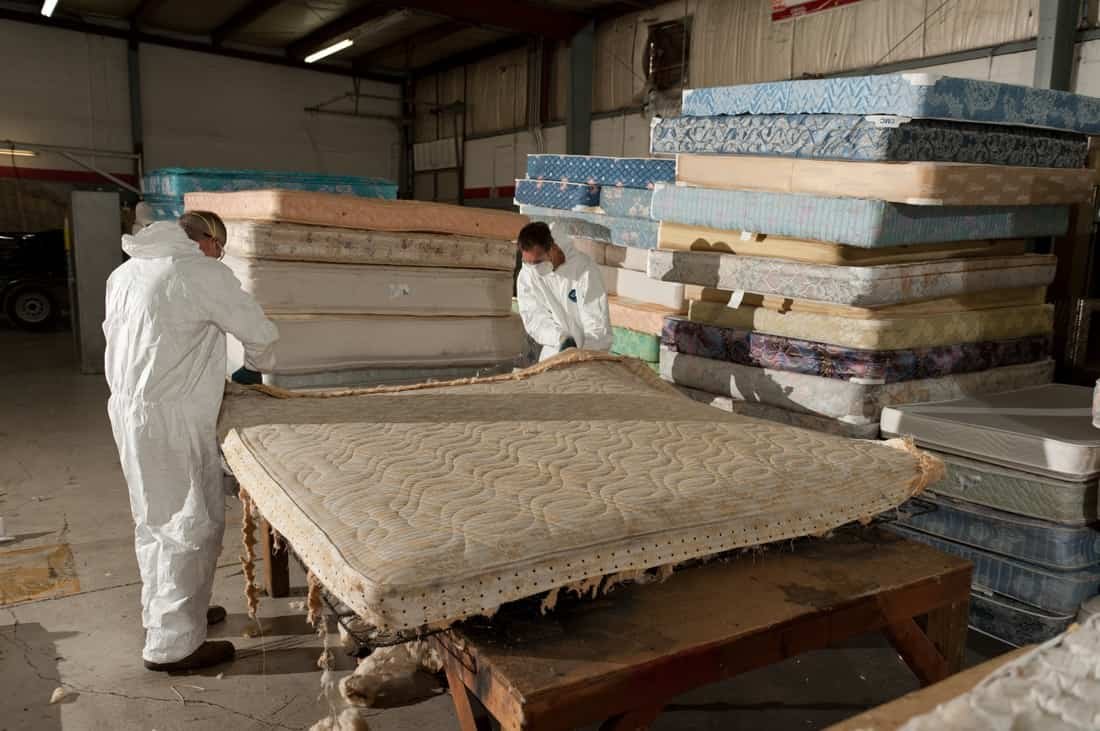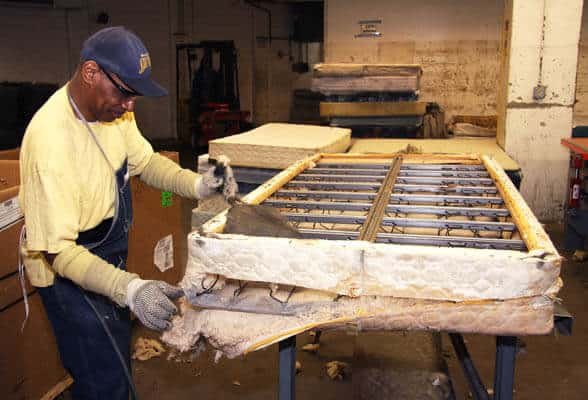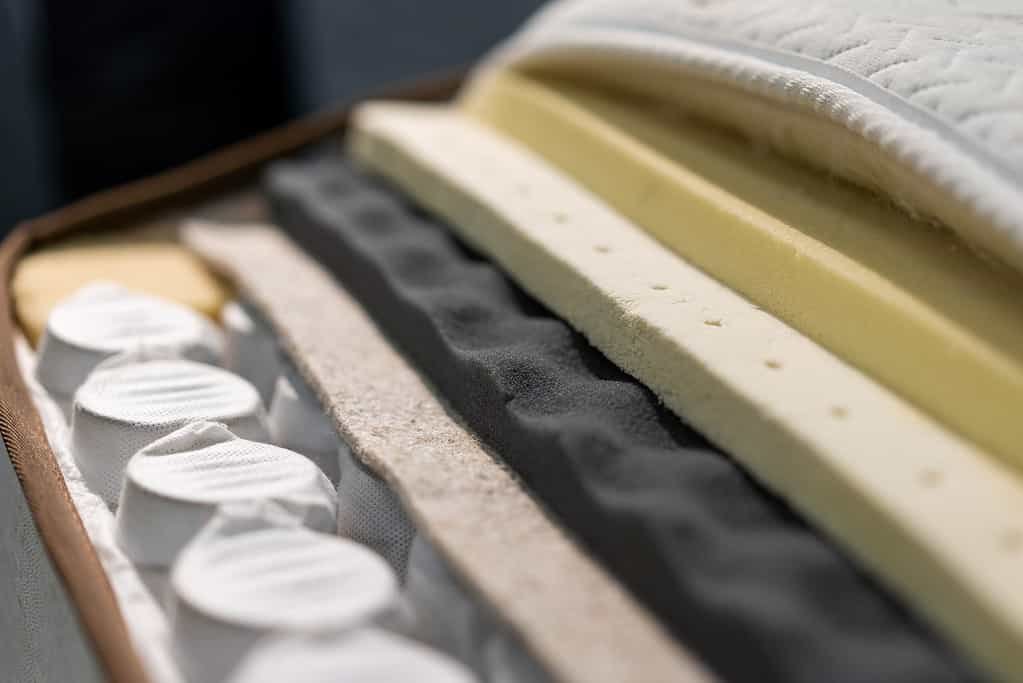How Mattresses are Recycled?
The Problem with Mattress Disposal
Mattresses are a common household item often taken for granted, but their disposal can pose significant challenges. They are bulky and difficult to handle, which makes them a major problem for waste management systems. Improper mattress disposal can lead to critical environmental issues such as air pollution, soil contamination, and the release of harmful chemicals into the environment. The challenge of handling mattresses also affects landfill operators, who often have to deal with increased operating costs due to the space that mattresses occupy.
In addition to the challenges faced by landfill operators, the disposal of mattresses is costly for municipalities. In the US alone, it is estimated that over 20 million mattresses are disposed of each year, which costs taxpayers hundreds of millions of dollars. This is because mattresses take up a significant amount of space in landfills, which can quickly fill up and require the opening of new landfills. Disposing of mattresses also requires additional labour and transportation costs, which further increases the cost of waste management. The environmental impact of improper mattress disposal cannot be overstated. Mattresses disposed of improperly often end up in illegal dumping sites or are burned, which can release harmful chemicals into the air and water. Mattresses also contain foam and synthetic fabrics that can take hundreds of years to decompose in landfills. This not only takes up valuable landfill space but also contributes to the production of greenhouse gases, which contribute to climate change.
Recycling mattresses can help reduce waste in landfills, conserve natural resources, and create jobs in the recycling industry. However, the process of mattress recycling is not without its challenges. Mattresses are difficult to dismantle, and the components can be contaminated with bedbugs, mould, or other contaminants. This makes it challenging to recycle mattresses on a large scale. There has been a growing interest in mattress recycling to address these challenges.
The disposal of mattresses presents significant challenges for waste management systems. Improper disposal can lead to environmental problems, increased operating costs for landfill operators, and increased costs for municipalities. However, there is a growing interest in mattress recycling, which has the potential to address these challenges by reducing waste in landfills, conserving natural resources, and creating jobs in the recycling industry.

The Benefits of Mattress Recycling
Mattress recycling has emerged as a sustainable solution to the problem of mattress disposal. Recycling mattresses can provide numerous benefits, including reducing waste in landfills, conserving natural resources, and creating job opportunities in the recycling industry.
One of the most significant benefits of mattress recycling is its potential to reduce the amount of waste in landfills. Mattresses are bulky items that occupy a considerable amount of landfill space. By recycling mattresses, the materials that make up the mattress can be reused or repurposed, which reduces the amount of space required in landfills. This, in turn, can extend the lifespan of existing landfills, reducing the need to open new ones.
Recycling mattresses also helps to conserve natural resources. Mattresses contain various materials, including foam, cotton, and steel springs, that can be recycled and repurposed for use in other products. Recycling these materials reduces the need for virgin materials, which helps conserve natural resources. Mattress recycling requires various skills, including dismantling and sorting materials, transportation, and processing. This creates employment opportunities for individuals in the recycling industry, particularly in areas where there is a need for job creation. Moreover, recycling mattresses can create job opportunities in the recycling industry.
However, the process of mattress recycling is not without its challenges. These challenges make it difficult to recycle mattresses on a large scale, which limits the potential for widespread adoption of mattress recycling. Despite these challenges, there has been significant progress in developing mattress recycling technologies. Innovative processes have been developed to dismantle mattresses and recover materials such as foam, steel, and cotton. Additionally, many mattress manufacturers have started incorporating eco-friendly materials and processes in producing new mattresses, which can be easily recycled at the end of their lifespan.
Mattress recycling has emerged as a sustainable solution to the challenges posed by mattress disposal. It provides numerous benefits, including reducing waste in landfills, conserving natural resources, and creating job opportunities in the recycling industry. While there are challenges associated with mattress recycling, the development of new technologies and the adoption of eco-friendly practices by mattress manufacturers provide hope for a more sustainable future.
The Process of Mattress Recycling
Mattress recycling involves several steps, including dismantling, sorting, and processing the materials. The process can be complex and challenging, requiring specialised equipment and skilled labour. However, the potential benefits of mattress recycling make it a worthwhile endeavour.
The first step in mattress recycling is dismantling the mattress. This involves removing the cover, foam, and other materials to expose the steel springs and wooden frame. To address this challenge, specialised equipment such as shredders and shears is used to dismantle the mattress without contaminating the materials. Once the mattress has been dismantled, the materials are sorted. Materials such as foam, steel, and cotton are separated for processing. Sorting can be time-consuming and requires skilled labour, as some materials may be challenging to identify or separate.
After sorting, the materials are processed. Foam, for example, can be shredded and used as cushioning material for new products. Steel springs can be melted down and used to produce new steel products. Cotton can be repurposed in textiles, insulation, and other products. The processing of materials requires specialised equipment and facilities. Processing facilities must meet environmental and safety standards to ensure the recycling process does not harm the environment or the workers.

While mattress recycling can be complex, it provides numerous benefits. Recycling mattresses reduces the amount of waste in landfills, conserves natural resources, and creates job opportunities in the recycling industry. It also reduces the environmental impact of improper mattress disposal, which can lead to air pollution, soil contamination, and the release of harmful chemicals into the environment. In addition to the benefits of mattress recycling, there are also economic incentives for recycling. Many mattress manufacturers are incorporating eco-friendly materials and processes in producing new mattresses, which can be easily recycled at the end of their lifespan. This creates a closed-loop system that reduces waste and conserves resources.
The mattress recycling process involves several steps, including dismantling, sorting, and processing the materials. While the process can be complex, the potential benefits of mattress recycling make it a worthwhile endeavour. Recycling mattresses reduces waste, conserves natural resources, creates job opportunities, and reduces the environmental impact of improper mattress disposal. As more manufacturers adopt eco-friendly practices, the potential for widespread adoption of mattress recycling continues to grow.
Innovative Mattress Recycling Technologies
In recent years, there have been significant developments in mattress recycling technologies. Innovations in dismantling, sorting, and processing have made mattress recycling more efficient and cost-effective, paving the way for the broader adoption of this sustainable practice.
One of the most promising developments in mattress recycling is using mechanical methods to dismantle the mattress. These methods involve using specialised equipment, such as shredders and shears, to disassemble the mattress without contaminating the materials. Automated processes are faster and more efficient than manual dismantling, reducing the amount of labour required and making mattress recycling more cost-effective.
Another innovation in mattress recycling is the use of chemical recycling methods. These methods involve breaking down the materials in the mattress into their component chemicals, which can be used to create new products. Chemical recycling can be handy for materials that are difficult to recycle using mechanical methods, such as foam. Chemical recycling methods are still in development, but they hold promise for the future of mattress recycling.
In addition to innovations in dismantling and processing, there have also been advancements in sorting technology. Automated sorting systems use sensors and imaging technology to identify and separate materials, making the sorting process faster and more efficient. These systems can handle large volumes of materials, reducing the amount of labour required and making mattress recycling more cost-effective. Mattress manufacturers have also started incorporating eco-friendly materials and processes to produce new mattresses. For example, some manufacturers use natural materials such as latex and organic cotton, which are biodegradable and easier to recycle. This has led to more accessible mattresses to dismantle and recycle at the end of their lifespan.
Case Studies
Several successful mattress recycling programs have been implemented in various cities and countries. For example, in California, the Bye-Bye Mattress program has recycled over 4 million mattresses since it began in 2015. The program has created over 200 jobs and has diverted over 200,000 tons of waste from landfills. In the UK, the Furniture Recycling Group recycles over 400,000 mattresses each year, creating a sustainable source of income for local communities. These case studies show successful mattress recycling programs can be implemented with the right resources and support.
Future of Mattress Recycling
The mattress recycling industry is increasing as more people become aware of the benefits of mattress recycling. New technologies and innovations are being developed to improve the efficiency of mattress recycling, including automated dismantling machines and chemical-free disinfection processes. Government policies can also promote mattress recycling by incentivising manufacturers to produce more sustainable products and creating regulations for the proper disposal of mattresses. In the future, mattress recycling has the potential to become a key component of waste management systems, creating a more sustainable future for our planet.
In conclusion, mattress recycling is essential for creating a more sustainable future. By recycling mattresses, we can reduce waste in landfills, conserve natural resources, and create jobs in the recycling industry. Successful mattress recycling programs have already been implemented in various cities and countries, and the industry is poised for further growth in the future. It is up to individuals, communities, and governments to support and promote mattress recycling programs to ensure a cleaner, more sustainable planet for future generations.



